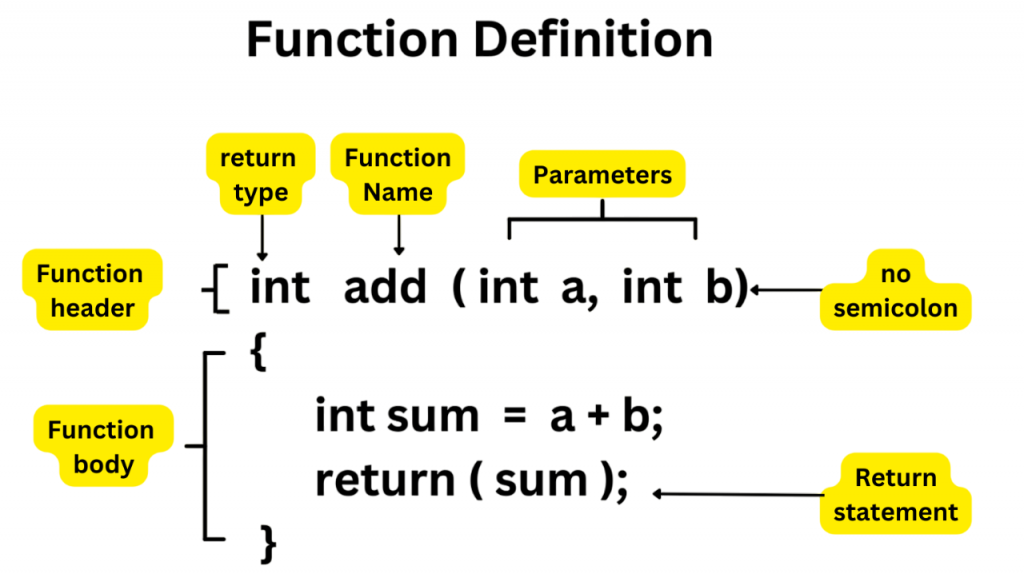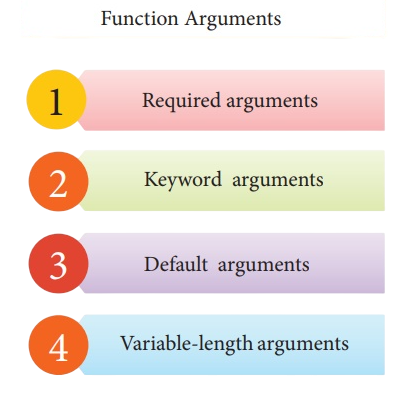
- What is a Function?
- Types of Call a Function in Python
- Defining a Function
- Calling a Function with Arguments
- Positional vs Keyword Arguments
- Default Parameters
- Variable-Length Arguments
- Return Statements
- Nested Function Calls
- Lambda Functions
- Common Errors While Calling Functions
- Best Practices in Using Functions
- Conclusion
Introduction
Functions are one of the foundational elements of programming. In Python, functions allow you to group code into reusable blocks, making programs more organized, maintainable, and scalable. Knowing how to define and call a function in Python is a fundamental skill every Python developer must master a concept reinforced in Web Developer Training, where learners build fluency in both front-end and back-end logic, including Python-based scripting for dynamic web applications. Mastering function syntax, argument handling, and return values enables developers to write modular, reusable code that powers scalable and maintainable websites. This guide explores the nature of functions in Python, different ways to Call a Function in Python, and best practices that ensure efficient use.
To Earn Your Web Developer Certification, Gain Insights From Leading Web Developer Experts And Advance Your Career With ACTE’s Web Developer Courses Today!
What is a Function?
A function is a block of reusable code designed to perform a single, related action. Functions are used to break down complex problems into smaller chunks, reduce repetition, and enhance clarity.

Python supports both built-in functions (like len(), print(), sum(), etc.) and user-defined functions (those you create using the def keyword). A typical function performs a task, optionally accepts input (known as parameters or arguments), and may return a result.
Types of Call a Function in Python
Python supports several types of functions: built-in, user-defined, anonymous (lambda), and recursive each offering unique advantages depending on the use case. While Python emphasizes flexibility and simplicity, understanding how function types compare across languages is key, as explored in TypeScript Vs JavaScript, where learners examine how static typing, optional parameters, and modular design influence function behavior and maintainability in large-scale web applications.
- Built-in Functions: Predefined in Python (e.g., max(), range(), print().
- User-defined Functions: Created by programmers using the def keyword.
- Lambda Functions: Small anonymous functions defined using the lambda keyword.
- Recursive Functions: Functions that call themselves to solve problems through repeated invocation.
- Generator Functions: Functions that yield values using the yield keyword instead of return.
Each of these serves a different purpose but fundamentally follows the same rules for invocation and argument handling.
Defining a Function
To call a function, it must first be defined. A function definition starts with the def keyword followed by the function name and parentheses. If the function accepts parameters, they are listed within the parentheses an essential programming concept that complements automation logic in What is UIPath, where learners explore how RPA workflows are constructed using visual blocks, conditional logic, and parameterized activities. Understanding function structure helps developers design reusable, modular bots that execute tasks with precision and flexibility.
- def greet(name):
- print(f”Hello, {name}!”)
Here, greet is a function that takes one parameter, name. The function body follows and is indented.
Would You Like to Know More About Web Developer? Sign Up For Our Web Developer Courses Now!
Calling a Function with Arguments
Once defined, a function can be called by writing its name followed by parentheses containing any required arguments a foundational concept covered in Web Developer Training, where learners build fluency in both front-end and back-end development, including function handling in JavaScript and Python. Understanding how to structure and invoke functions is key to writing modular, maintainable code across dynamic web applications.

- greet(“Alice”)
- # When you run this, the output will be:
- # Hello, Alice!
If a function expects arguments and you don’t provide them, Python will raise a TypeError. Similarly, if you pass more arguments than expected, you’ll also get an error.
Positional vs Keyword Arguments
Python functions support different ways of passing arguments. The most common method is positional arguments, where values are assigned based on their order in the function call. For example, in add(2, 3), the value 2 is assigned to x and 3 to y. Another option is keyword arguments, where you explicitly specify the parameter name, such as add(x=2, y=3) a syntax pattern that reflects core principles in Web Development Languages To Learn, where learners explore how different languages like Python, JavaScript, and PHP handle function definitions, argument passing, and modular logic. Understanding these patterns helps developers write cleaner, more maintainable code across diverse web stacks. Python also allows mixing positional and keyword arguments, but positional arguments must always come first. For instance, add(2, y=3) is valid; reversing the order will result in an error.
Are You Interested in Learning More About Web Developer? Sign Up For Our Web Developer Courses Today!
Default Parameters
Functions can have default values for parameters. If no argument is passed for that parameter during the function call, the default value is used a behavior that complements error-handling strategies discussed in Python KeyError Exceptions, where developers learn how to manage missing dictionary keys and prevent runtime failures. By combining default parameters with safe access methods like `.get()`, Python programmers can build more resilient and user-friendly applications.
- def greet(name=”Guest”):
- print(f”Hello, {name}!”)
Calling greet() will now print “Hello, Guest!” unless another name is passed.
Variable-Length Arguments
Sometimes, the number of arguments a function can accept is not fixed. Python supports this using *args and **kwargs..
- # *args Non-keyworded variable arguments.
- def total(*numbers):
- return sum(numbers)
- print(total(1, 2, 3, 4)) # Output: 10
- # **kwargs – Keyworded variable arguments:
- def print_details(**info):
- for key, value in info.items().
- print(f”{key}: {value}”).
- print_details(name=”Alice”, age=25, city=”Chennai”)
*args collects positional arguments into a tuple, while **kwargs collects keyword arguments into a dictionary.
Return Statements
Functions can return data using the return statement. If no return is specified, the function returns None by default.
- def square(x):
- return x * x
- result = square(5)
- print(result) # Output: 25
- # Multiple values can be returned using tuples:
- def stats(a, b):
- return a + b, a * b
- sum_, product = stats(3, 4)
Nested Function Calls
You can call a function inside another function or even within its own call. This is useful when you want to pass the result of one function to another.
- def double(x):
- return x * 2
- def add_five(x):
- return x + 5
- result = add_five(double(3)) # double(3) = 6 → add_five(6) = 11
This structure improves code readability and composability.
Lambda Functions
Lambda functions are small anonymous functions defined with the lambda keyword.
- # Example:
- square = lambda x: x ** 2
- print(square(4)) # Output: 16
- # Lambdas are often used in short-term scenarios like filtering, mapping, or sorting:
- nums = [5, 3, 9, 1]
- nums.sort(key=lambda x: x)
Though concise, lambda functions are limited in functionality as they can only contain a single expression.
Common Errors While Calling Functions
When working with Python functions, it’s important to be aware of common mistakes. One frequent error is missing required positional arguments. For example, if you call the function say_hello(name) without providing a name, it raises a TypeError. Another issue happens when you pass too many arguments. Calling say_hello(“Alice”, “Bob”) also results in a TypeError. With keyword arguments, the order has to be correct; writing greet(name=”Alice”, “Bob”) causes a SyntaxError errors that highlight the importance of structured logic and parameter handling, as emphasized in AngularJS CDN Integration, where learners explore how modular scripts, dependency injection, and external libraries are configured for scalable web applications. Understanding syntax precision ensures smoother integration and fewer runtime failures in dynamic environments. Functions must also be defined before they are called. If you use greet(“Alice”) before defining greet, it raises a NameError. Finally, beginners often confuse return values with print statements. For instance, a function that only prints a + b will return None if you assign it to a variable. To avoid this, always use a return statement when you need an output.
Best Practices in Using Functions
Writing clean and efficient Python functions involves following some best practices. Always use descriptive function names, like calculate_total_price, instead of vague names such as ctp. Functions should be short and focused, performing only one task. If they become too long, it’s better to split them into smaller functions. To improve readability, include docstrings that explain the function’s purpose, parameters, and return values, as shown in a simple greet(name) example. It’s also good practice to avoid global variables and use local variables to prevent unintended side effects a principle reinforced in Practical Applications of Python, where learners explore real-world use cases across web development, data science, automation, and embedded systems. By emphasizing modular design and scoped variable management, Python developers can build cleaner, more maintainable applications that scale across diverse environments. When results are needed for further processing, use return statements instead of just printing values. For added clarity, especially in larger projects, include type hints (available in Python 3.5 and later), such as specifying def add(a: int, b: int) -> int. Finally, make your code more reliable by handling exceptions gracefully with try-except blocks around critical function calls.
Conclusion
Call a Function in Python is a vital skill that supports modular programming. Whether you’re working with built-in, user-defined, or lambda functions, mastering how to define and call them with or without arguments will help you write clean, reusable, and efficient code an essential skill emphasized in Web Developer Training, where learners gain hands-on experience with JavaScript fundamentals, functional programming concepts, and modular coding practices. Understanding function structures enhances code readability, simplifies debugging, and supports scalable web development. From handling return values and argument types to applying best practices like proper documentation and exception handling, this guide covers every essential aspect. By learning different ways to call a function in Python, you’ll be well-equipped to build scalable programs that are easy to read, test, and maintain.



